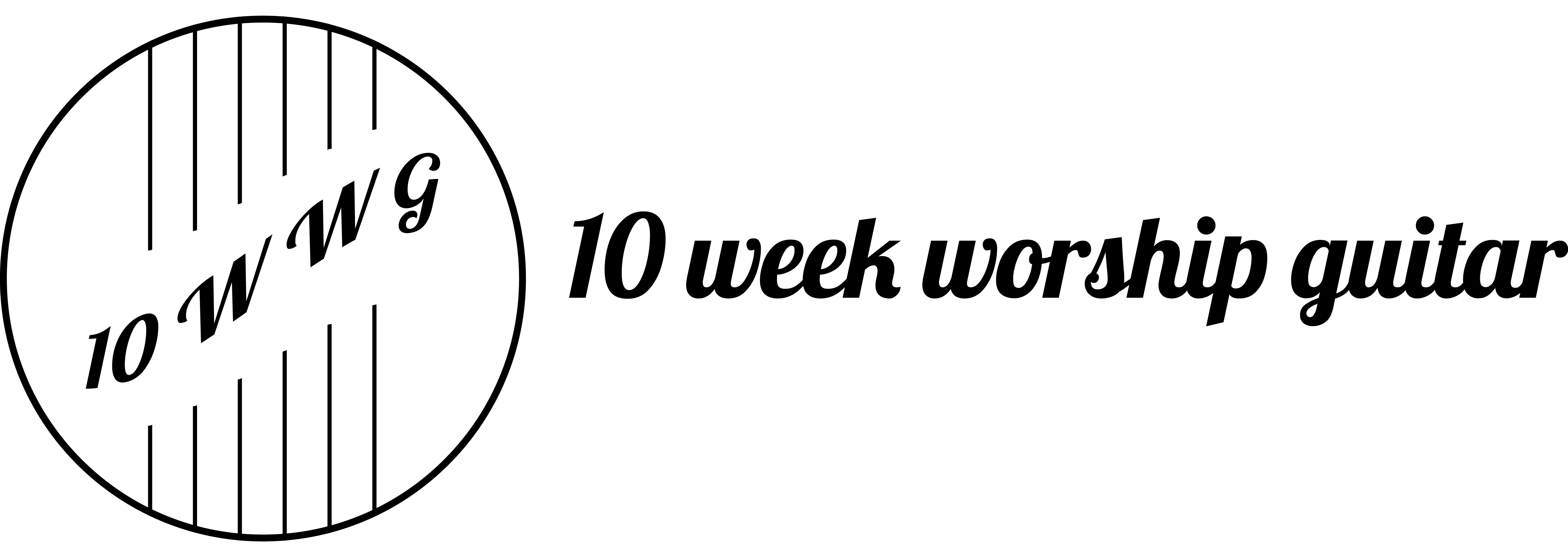Welcome to The Ten Week Worship Guitar blog.
As well as my recent resurrection of my YouTube channel, on which I’ve now begun sharing a weekly worship guitar focused workshop called ‘Worship Workshop Wednesday’, I recently resumed blogging. I started with a 3-part series on why I teach worship guitar as opposed to just playing it.
Now, over the next few weeks and months, here on the blog, I’m sharing something which I’ve not extensively shared anywhere before. I’ll be sharing some work from my Ph.D, which focuses on the development of the guitar over the last century, and it’s influence on the music produced on it. If you’re interested in learning more about the guitar, look no further than this blog. If you know others who would be interested in this too, please share with them.
A new post will be shared here on the blog every Monday, so do ensure that you’re following the journey, and don’t forget to subscribe to my YouTube channel, where you’ll receive a free workshop every week which will teach you not only a new worship song to add to your repertoire, but also a skill, which will continue to carry you forward in your worship guitar journey.
Leading figures in the development of the guitar: Part One
Two of the leading figures competing for the rapidly expanding market for guitars in the United States were C. F. Martin and Orville Gibson. Martin, who had moved to the United States from Germany, began making guitars there in 1833, and Gibson, born in 1856 in New York State, began to make guitars in the 1870s.
“An old box and a bit of stick for the neck.”
In the 1920s a number of musicians, such as the jazz guitarist Johnny St. Cyr (1890-1966), and blues guitarists Scrapper Blackwell (1903-1962) and T-Bone Walker (1910 – 1975), describe constructing their own guitar from such items as cigar boxes. Blackwell said that he made his first guitar from a mandolin neck and a cigar box. Mississippi born blues guitarist Big Bill Broonzy (1893 – 1958) said, “When I was about ten years old. I made a fiddle out of a cigar box; a guitar was made out of a box of goods for my buddy Louis Carter, and we would play for white peoples picnics” (Mongan 1983: 4), and Mississippi born blues singer Muddy Waters (1915 – 1983) said, “All the kids made their own git-tars. Made mine out of an old box and a bit of stick for the neck. Couldn’t do a thing with it, but you know, that’s how you learn” (Mongan 1983: 4). Louisiana born Robert Pete Williams (1914 – 1980), who began playing the guitar in 1934, said “I made my first guitar. I made it out of a cigar box and a good stout long board, and it had five strings of baling wire. Hurt my fingers on it” (Evans 1977: 287).
Cheap guitars.
Cheap guitars were also beginning to be manufactured. In 1894 the mail order company Sears-Roebuck was offering seven different guitar models in their annual catalogue, along with instruction books and collections of popular songs with guitar accompaniment. In 1908 the company was listing mail order guitars in their catalogue for $1:89. This included a spare set of strings, a capo, a tuition manual and a fingering chart. In 1909 they were promoting as many as twelve models, which is some indication of the success they were having in the cheap mass market. By 1920 Sears were distributing over five million copies of their catalogues to rural America, containing listings of cheap instruments, song-books and sheet music. Economic considerations, then, had an influence on the growing popularity of the guitar, which was both cheap and portable. According to B. B. King:
“At that time, a horn was costing like $100… Out of the twenty-two fifty a week I was making, after you brought groceries and other necessities, you could only save seven to eight dollars. So you brought whatever instrument you could afford – and that was the guitar”. (Shaw 1987: 222)
Join me here on the blog again next week as I’ll be continuing this series going through the development of the guitar. Next week I’ll be sharing a little more about the leading figures of developing the guitar.
By the way, if you’ve always wanted to play worship guitar but have never found the time, I’d love to introduce you to learning to play from scratch by going through my FREE 3-part miniseries which will give you not only the skills, but will also give you three new worship songs to add to your repertoire. Click HERE to access the free series and start (or continue!) your worship guitar journey today!
